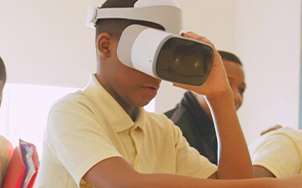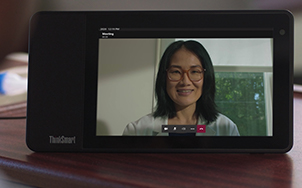How do we teach our brains to not forget 3 out of 4 new things?
It takes just 6 days for people to forget as much as 75% of new information. Source
Now, add to this the challenges intrinsic to training people for complex jobs, especially ones that involve high stakes or dangerous conditions. Then factor in this recent study Source claiming that 85% of the jobs in 2030 haven’t even been invented yet.
And there you have it: The truly epic proportions of the task facing educators today. This is precisely why, in partnership with IT experts, they’re bringing richer learning experiences to students through immersive technologies like VR and AR.
These solutions have the ingredients to make learning last for students of all ages: the experience of repeated realistic practice plus real-time feedback, minus the risk of real-world failure.
As the world’s leading provider of education technology, Lenovo is driving this revolution. We co-innovate with other industry leaders like Intel®, Microsoft, Google, Veative, Dev Clever, Wild Immersion, Tata Elxsi, Wipro and many more, to deliver best-in-class immersive experiences.
Virtual reality, very real learning
Immersive tools are powerful training aids – one study Source found that the retention rate for information presented in VR was 75%, versus 10% if the same information was read.
Other benefits are harder to measure, but plain to see. VR can shift students’ sense of the possible. At Fort Worthington Elementary and Middle School in East Baltimore, educators use Lenovo VR headsets to teleport students to sights unlike any they’ve seen in person, from lush jungles to deep-sea dives.
Getting immersed in the community with esports
Elsewhere, technology helps learning feel immersive by deepening the sense of community.
At GOAL Academy High School in Colorado, Lenovo’s esports program gives at-risk kids a sense of purpose and belonging. Teachers have seen an astonishing 20% average gain in grades for participating students. The school also counts on Lenovo's hyperconverged infrastructure solution to provide uninterrupted access to the latest course materials.
Changing the game of professional training
Once upon a time, immersive learning simulators were seen as a powerful solution to help train professionals like astronauts. But they were also prohibitively expensive and impractical for most uses.
It’s a different world today. AR and VR have gained sophistication while also growing more affordable. They now help learners thrive in settings from the C-suite to the cockpit, allowing them to master any job, anywhere in the world.
It’s a win all around: workers find AR trainings more engaging. Source The training itself gets smarter, connecting engagement patterns with learning outcomes.
More effective problem-solving
Immersive learning tools can sometimes eliminate the need for memorization altogether.
AR headsets with smart overlays support aircraft technicians in diagnosing engine issues, for instance. They also help assemble and test aircraft systems.
AR support speeds up the development of new systems, too. The Lenovo AR platform was used to develop a sophisticated, complex aviation maintenance application and get it running in under two months.
An experience without compromise
Comprehensive security and remote management tools fortify these experiences in the face of rising cyberthreats.
Lenovo device solutions with the Intel® vPro® platform enable great experiences for educators, without trading performance for security or manageability for stability. And Lenovo’s virtual desktop infrastructure ensures a universal, smooth experience is accessible from anywhere, regardless of user device.
With Lenovo end-to-end services, educators and corporate trainers have a trusted partner to manage the lifecycle of their devices and infrastructure.
Making a difference in the real world
From medical schools cutting surgery mistakes with VR training to manufacturers increasing workforce productivity with AR, the applications are limitless. Immersive technology lets learners and trainers alike experience the road to success.
FEATURED SOLUTIONS
1 Why Students Forget—and What You Can Do About It
2 85% Of Jobs That Will Exist In 2030 Haven’t Been Invented Yet
3 Enterprise Virtual Reality Training Services to Generate US$6.3 billion in 2022
4 Improving biotech education through gamified laboratory simulations
5 Virtual Reality opportunities for learning
6 Study: Remote guidance using augmented reality (AR) is more effective than a standard video call
















